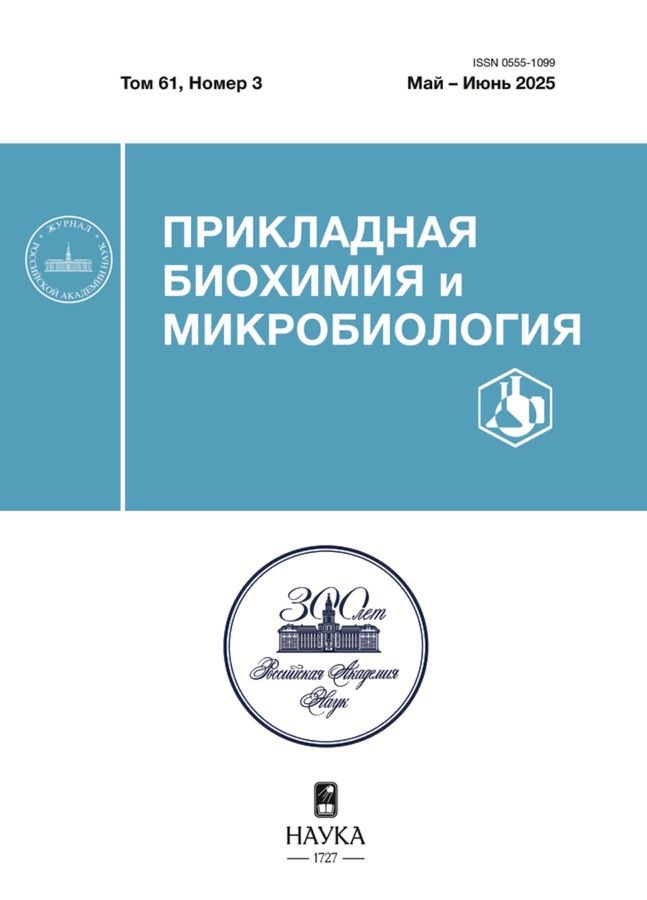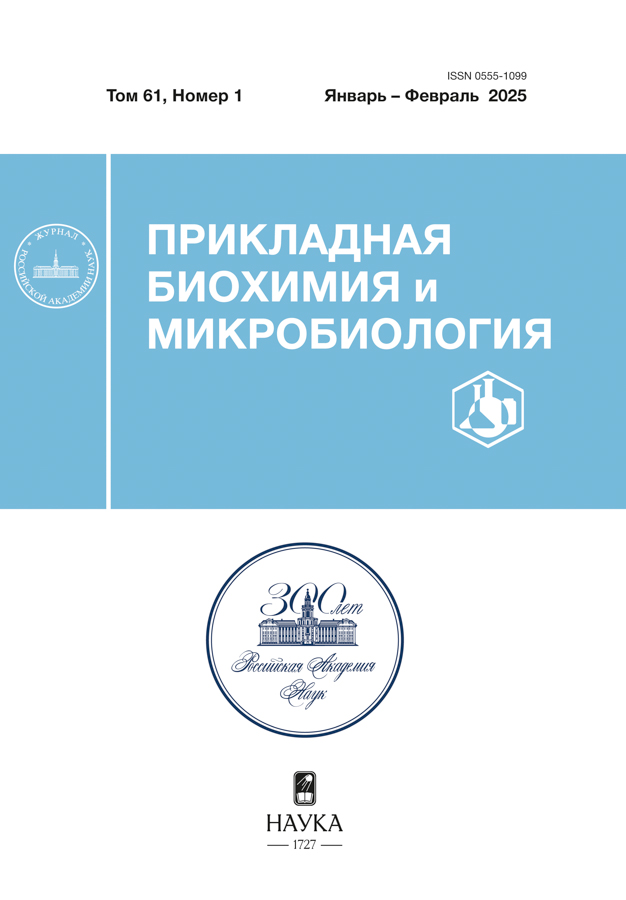Идентификация возбудителя ложной мучнистой росы винограда Plasmopara viticola на основе количественной ПЦР
- Авторы: Нитяговский Н.Н.1, Днепровская А.А.1,2, Ананьев А.А.1, Киселев К.В.1, Алейнова О.А.1
-
Учреждения:
- Федеральный научный центр биоразнообразия наземной биоты Восточной Азии, ДВО РАН
- Дальневосточный федеральный университет, Институт мирового океана
- Выпуск: Том 61, № 1 (2025)
- Страницы: 68-76
- Раздел: Статьи
- URL: https://cardiosomatics.ru/0555-1099/article/view/683313
- DOI: https://doi.org/10.31857/S0555109925010075
- EDN: https://elibrary.ru/CZWTZC
- ID: 683313
Цитировать
Полный текст
Аннотация
Предложен новый метод ранней идентификации возбудителя ложной мучнистой росы винограда Plasmopara viticola, основанный на методе количественной ПЦР в реальном времени (ПЦР РВ) с применением флуоресцентного красителя SYBR Green I. Разработаны шесть пар праймеров для ПЦР РВ для идентификации P. viticola, где пара праймеров PvITS1_2-real-s/a продемонстрировала наибольшую эффективность для раннего выявления ложной мучнистой росы винограда. Более того, была показана положительная корреляция (R = 0.86) при сравнении результатов ПЦР РВ с праймерами PvITS1_2-real-s/a с данными метатаксономического анализа по распространению P. viticola среди растений Дальневосточных видов и сортов винограда. Таким образом, ПЦР РВ с парой праймеров PvITS1_2-real-s/a, является дешевым и эффективным методом для раннего выявления и мониторинга бессимптомных инфекций P. viticola. Разработанный метод может послужить основой для прогнозирования эпидемий ложной мучнистой росы винограда и борьбы с ней на виноградниках.
Ключевые слова
Полный текст
Об авторах
Н. Н. Нитяговский
Федеральный научный центр биоразнообразия наземной биоты Восточной Азии, ДВО РАН
Email: aleynova@biosoil.ru
Россия, Владивосток, 690022
А. А. Днепровская
Федеральный научный центр биоразнообразия наземной биоты Восточной Азии, ДВО РАН; Дальневосточный федеральный университет, Институт мирового океана
Email: aleynova@biosoil.ru
Россия, Владивосток, 690022; Владивосток, 690922
А. А. Ананьев
Федеральный научный центр биоразнообразия наземной биоты Восточной Азии, ДВО РАН
Email: aleynova@biosoil.ru
Россия, Владивосток, 690022
К. В. Киселев
Федеральный научный центр биоразнообразия наземной биоты Восточной Азии, ДВО РАН
Email: aleynova@biosoil.ru
Россия, Владивосток, 690022
О. А. Алейнова
Федеральный научный центр биоразнообразия наземной биоты Восточной Азии, ДВО РАН
Автор, ответственный за переписку.
Email: aleynova@biosoil.ru
Россия, Владивосток, 690022
Список литературы
- Koledenkova K., Esmaeel Q., Jacquard C., Nowak J., Clément C., Ait Barka E. // Frontiers in Microbiology. 2022. V. 13. P. 889472. https://doi.org/10.3389/fmicb.2022.889472
- Toffolatti S.L., Russo G., Campia P., Bianco P.A., Borsa P., Coatti M., Torriani S.F., Sierotzki H. // Pest Management Science. 2018. V. 74. № 12. P. 2822–2834.
- Toffolatti S.L., Serrati L., Sierotzki H., Gisi U., Vercesi A. // Pest Management Science. 2007. V. 63. № 2. P. 194–201.
- Burruano S. // Mycologist. 2000. V. 14. № 4. P. 179–182.
- Díez-Navajas A.M., Greif C., Poutaraud A., Merdinoglu D. // Micron. 2007. V. 38. № 6. P. 680–683.
- Vercesi A., Sirtori C., Vavassori A., Setti E., Liberati D. // Med. Biol. Eng. Comput. 2000. V. 38. № 1. P. 109–112.
- Vercesi A., Toffolatti S.L., Zocchi G., Guglielmann R., Ironi L. // Eur J Plant Pathol. 2010. V. 128. № 1. P. 113–126.
- Hong C.-F., Scherm H. // Journal of Phytopathology. 2020. V. 168. № 5. P. 297–302.
- Negrel L., Halter D., Wiedemann-Merdinoglu S., Rustenholz C., Merdinoglu D., Hugueney P., Baltenweck R. // Frontiers in Plant Science. 2018. V. 9. P. 360. https://doi.org/10.3389/fpls.2018.00360
- Si Ammour M., Bove F., Toffolatti S.L., Rossi V. // Frontiers in Plant Science. 2020. V. 11. P. 1202. https://doi.org/10.3389/fpls.2020.01202
- Valsesia G., Gobbin D., Patocchi A., Vecchione A., Pertot I., Gessler C. // Phytopathology. 2005. V. 95. № 6. P. 672–678.
- Yang L., Chu B., Jie D., Yuan K., Sun Q., Jiang C., Ma Z. // Phytopathology Research. 2023. V. 5. № 1. P. 19. https://doi.org/10.1186/s42483-023-00178-w
- Kong X., Qin W., Huang X., Kong F., Schoen C.D., Feng J. et al. // Sci Rep. Nature Publishing Group, 2016. V. 6. № 1. P. 28935. https://doi.org/10.1038/srep28935
- Kiselev K.V., Nityagovsky N.N., Aleynova O.A. // Appl. Biochem. Microbiol. 2023. V. 59. № 3. P. 361–367.
- Nityagovsky N.N., Ananev A.A., Suprun A.R., Ogneva Z.V., Dneprovskaya A.A., Tyunin A.P. et al. // Horticulturae. 2024. V. 10. № 4. P. 326. https://doi.org/10.3390/horticulturae10040326
- Ye J., Coulouris G., Zaretskaya I., Cutcutache I., Rozen S., Madden T.L. // BMC Bioinformatics. 2012. V. 13. № 1. P. 134. https://doi.org/10.1186/1471-2105-13-134
- Robideau G.P., De COCK A.W. a. M., Coffey M.D., Voglmayr H., Brouwer H., Bala K. et al. // Molecular Ecology Resources. 2011. V. 11. № 6. P. 1002–1011.
- Choi Y.-J., Beakes G., Glockling S., Kruse J., Nam B., Nigrelli L. et al. // Molecular Ecology Resources. 2015. V. 15. № 6. P. 1275–1288.
- Kiselev K.V., Aleynova O.A., Grigorchuk V.P., Dubrovina A.S. // Planta. 2017. V. 245. № 1. P. 151–159.
- R Core Team // R Foundation for Statistical Computing. 2021. https://www.r-project.org/
- Kassambara A. // ggpubr: “ggplot2” Based Publication Ready Plots. R package. 2023. https://rpkgs.datanovia.com/ggpubr/
- Lou D., Meurer M., Ovchinnikova S., Burk R., Denzler A., Herbst K. et al. // EMBO reports. 2023. V. 24. № 5. P. e57162. https://doi.org/10.15252/embr.202357162
- Mouafo-Tchinda R.A., Beaulieu C., Fall M.L., Carisse O. // Canadian Journal of Plant Pathology. 2021. V. 43. № 1. P. 73–87.
Дополнительные файлы













